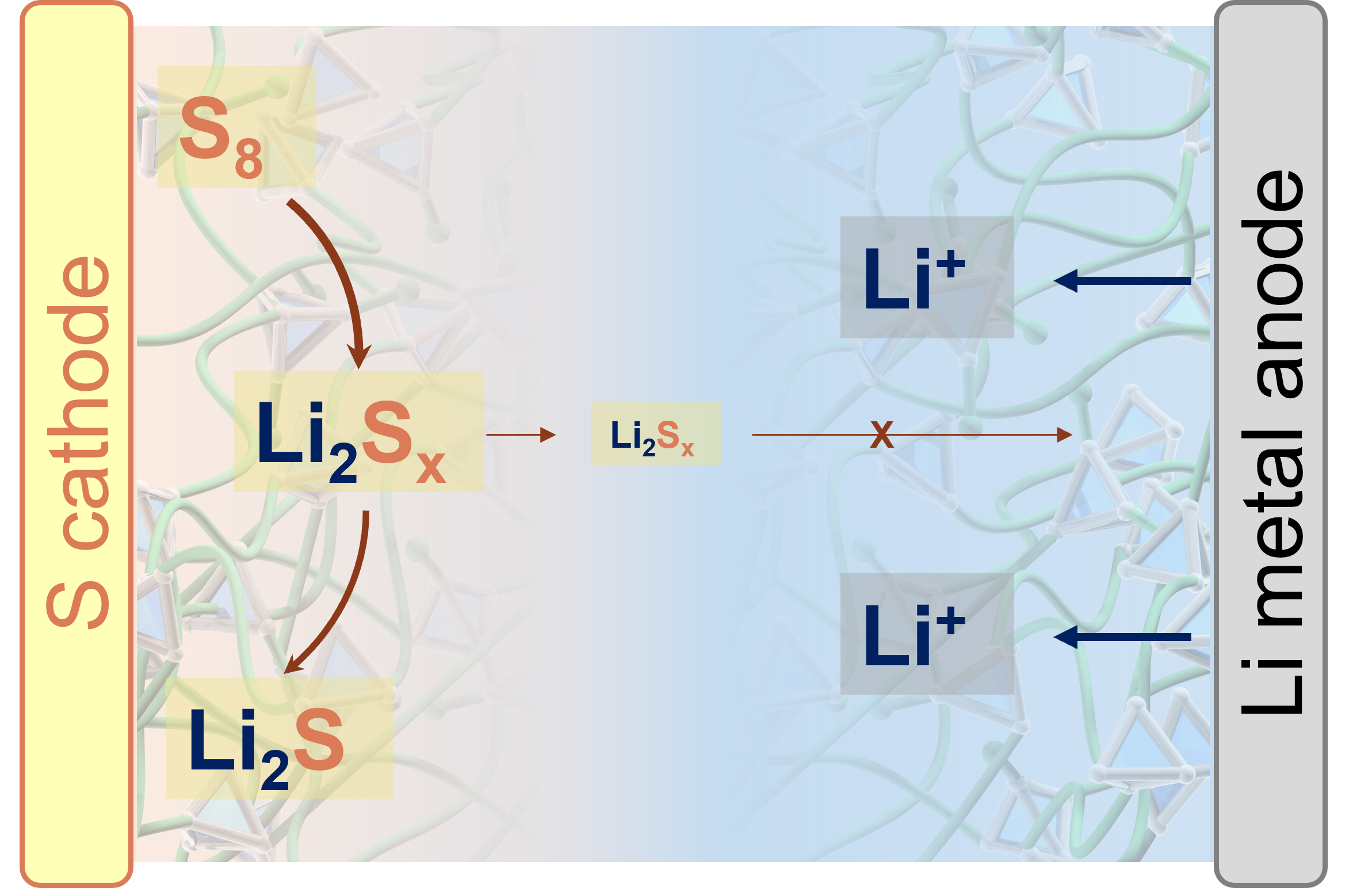Polysulfide shuttling poses a pressing barrier to the realization of lithium-sulfur (Li-S) batteries as viable, next-generation energy storage systems. The unique capabilities of Li-S batteries, boasting high energy density and cost-effectiveness, position them as a promising alternative to current lithium-ion technology, and even lithium-metal batteries. However, the migration of polysulfide species within the battery electrolyte severely compromises their performance, leading to rapid capacity decay and reduced cycle life. Addressing this issue is crucial for unlocking the potential of Li-S batteries in applications ranging from portable electronics to electric vehicles.
In response to this challenge, our research introduces an approach designed to inhibit the shuttling of polysulfide species within an all-solid-state Li-S batteries. By developing a polymer electrolyte network that integrates charge centers with solvation-tuning side chains, we strategically modify the solvation environment to make it unfavorable for lithium polysulfides. This dual-action mechanism effectively prevents polysulfide migration, thereby enhancing the battery's cycling stability and performance. We performed a comprehensive analysis combining experimental observations with density functional theory (DFT)-based calculations to elucidate the underlying interactions at play. We further used in situ optical monitoring and Raman spectroscopy which offered direct evidence of the polymer electrolyte's ability to repel lithium polysulfides during battery operation. The integration of these techniques provides a robust framework for understanding the complex dynamics influencing Li-S battery performance, offering insights that extend beyond conventional analytical methods.
The implications of our findings are far-reaching, offering a viable pathway to significantly improve the performance and extend the lifetime of Li-S batteries. By demonstrating a tangible solution to the polysulfide shuttling problem, our work paves the way for the broader adoption of Li-S technology in a wide array of energy storage applications. Looking forward, this research not only contributes to the advancement of Li-S battery technology but also sets a precedent for future studies aiming to tackle similar challenges in energy storage. As we continue to refine and optimize our polymer electrolyte design, we anticipate further breakthroughs that will solidify the position of Li-S batteries as a cornerstone of sustainable energy systems.


